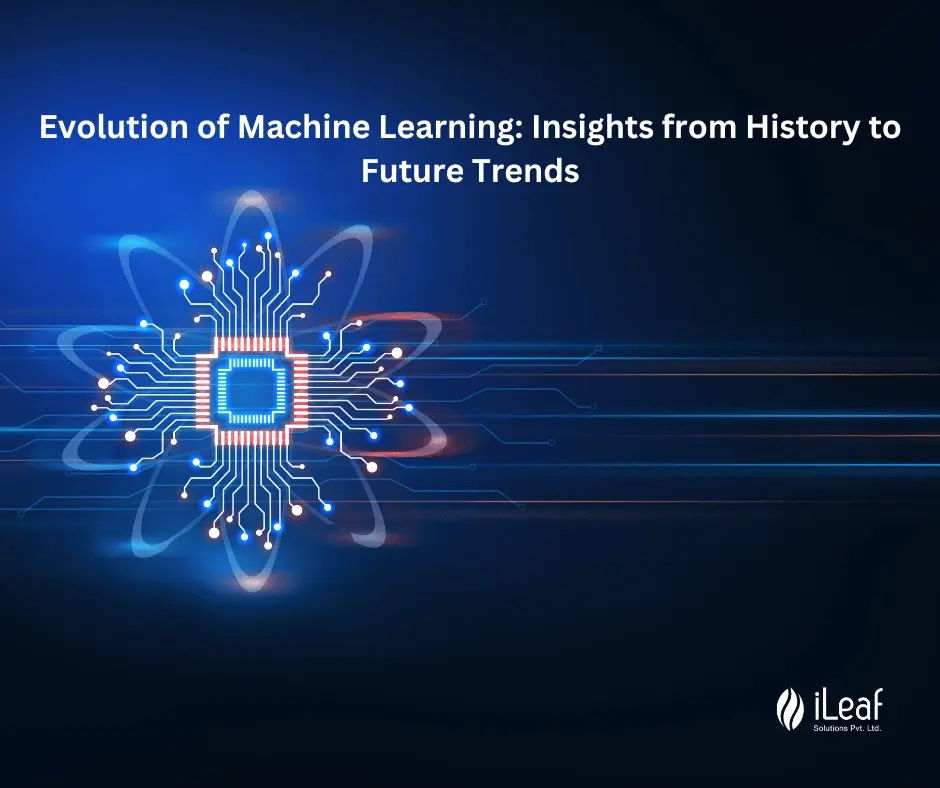Machine Learning: From Past to Future - What You Need to Know

Table of Contents
- Introduction
- The Evolution of Machine Learning
- Key of Machine Learning
- Milestones in the History of Machine Learning
- The Future of Machine Learning
- Advancements in Creative AI
- Ethical Challenges and Responsible AI
- Conclusion
Introduction
Machine learning, a subset of artificial intelligence (AI), has transformed the way we approach problem-solving and decision-making. In this comprehensive guide, we will explore the evolution of machine learning, its key components, pivotal milestones in its history, and gaze into the future to uncover emerging trends. From supervised to unsupervised learning, creative AI advancements to ethical challenges, this blog provides a holistic view of the machine learning landscape.
The Evolution of Machine Learning
Understanding the roots of machine learning is crucial to grasp its significance today. The evolution can be traced through three main paradigms:
1. Supervised Learning
Supervised learning, where the algorithm is trained on a labeled dataset, has been a cornerstone of machine learning. From linear regression to complex neural networks, this approach powers various applications, such as image recognition and natural language processing.
2. Unsupervised Learning
Unsupervised learning takes a different path, relying on unlabeled data to identify patterns and relationships. Clustering and dimensionality reduction are common techniques, opening doors to insights in fields like customer segmentation and anomaly detection.
3. Reinforcement Learning
Inspired by behavioral psychology, reinforcement learning introduces a system that learns by interacting with its environment. This has been pivotal in training algorithms to make sequential decisions, powering advancements in robotics and game-playing AI.
Key Components of Machine Learning
To grasp the intricacies of machine learning, understanding its key components is essential. These include:
- Algorithms: The heart of machine learning, algorithms process data to make predictions or decisions.
- Data: High-quality, diverse datasets fuel the training of machine learning models.
- Models: Trained algorithms form models, representing the acquired knowledge.
- Features: Variables within the data that influence the model's output.
Milestones in the History of Machine Learning
The journey of machine learning is marked by significant milestones:
- 1950s-1960s: The birth of machine learning, focusing on pattern recognition.
- 1980s: The emergence of symbolic reasoning and expert systems.
- 1990s: The shift towards statistical and probabilistic methods.
- 2000s: The rise of big data and the resurgence of neural networks.
- 2010s: Deep learning redefines the possibilities, leading to breakthroughs in image and speech recognition.
The Future of Machine Learning
As we peer into the future, several trends shape the trajectory of machine learning:
- Explainable AI: The demand for transparency in AI decision-making.
- Edge Computing: Bringing machine learning capabilities closer to the data source.
- AutoML: Automated machine learning workflows for non-experts.
- Federated Learning: Collaborative training models without centralized data.
Advancements in Creative AI
Beyond traditional applications, machine learning has taken strides in creative fields:
- Generative Adversarial Networks (GANs): Creating realistic content, from images to music.
- Natural Language Processing (NLP): Generating coherent and context-aware text.
- Teaching machines to see: The power of computer vision.
Ethical Challenges and Responsible AI
With great power comes great responsibility. The rise of machine learning also brings ethical considerations:
- Bias and Fairness: Addressing algorithmic biases in decision-making.
- Privacy Concerns: Safeguarding sensitive information in the age of data-driven insights.
- Building trustworthy AI: Creating guidelines for ethical development and use.
Machine learning's journey from the past to the future is a testament to human ingenuity. Understanding its evolution, key components, historical milestones, and emerging trends equips us to harness its power responsibly. As we navigate the exciting terrain of creative AI and confront ethical challenges, a thoughtful approach is essential to ensure that machine learning continues to elevate our capabilities while respecting fundamental ethical principles.
In conclusion, the future of machine learning holds boundless possibilities, and staying informed is the key to unlocking its full potential














